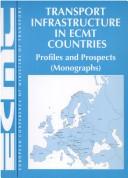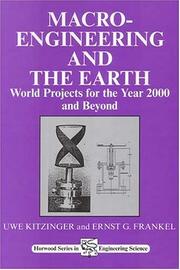| Listing 1 - 10 of 24 | << page >> |
Sort by
|
Book
Year: 1998 Publisher: Cambridge, Mass. National Bureau of Economic Research
Abstract | Keywords | Export | Availability | Bookmark
 Loading...
Loading...Choose an application
- Reference Manager
- EndNote
- RefWorks (Direct export to RefWorks)
Individuals invest in their local environments by volunteering, getting involved in local government, becoming informed about their political leaders, joining non-professional organizations and even gardening. Homeownership may encourage these investments because homeownership gives individuals an incentive to improve their community and because homeownership creates barriers to mobility. Using the U.S. General Social Survey document that homeowners are more likely to invest in social capital, and a simple instrumental variables strategy suggests that the relationship may be causal. While our results are not conclusive, we find evidence that a large portion of the effect of homeownership on these investments may come from lower mobility rates for homeowners. Using the German Socio-Economic Panel homeownership and citizenship controlling for individual fixed effects. Finally, across cities and counties, areas with more homeowners have lower government spending, but spend a larger share of their government budget on education and highways.
Book
Year: 1998 Publisher: Washington, DC : World Bank, Economic Development Institute, Regulatory Reform and Private Enterprise Division and Private Participation in Infrastructure Group,
Abstract | Keywords | Export | Availability | Bookmark
 Loading...
Loading...Choose an application
- Reference Manager
- EndNote
- RefWorks (Direct export to RefWorks)
Book
ISBN: 1280003863 9786610003860 0585163200 Year: 1998 Volume: no. 399 Publisher: Washington, D.C. : World Bank,
Abstract | Keywords | Export | Availability | Bookmark
 Loading...
Loading...Choose an application
- Reference Manager
- EndNote
- RefWorks (Direct export to RefWorks)
Infrastructure (Economics) --- Privatization. --- Concessions.
Book
ISBN: 9264263039 928212231X Year: 1998
Abstract | Keywords | Export | Availability | Bookmark
 Loading...
Loading...Choose an application
- Reference Manager
- EndNote
- RefWorks (Direct export to RefWorks)
L'espace européen souffre d'une intégration insuffisante des réseaux de transport et d'une congestion croissante, surtout dans le domaine routier. Cette publication fait le point sur ces problèmes et soulève, en particulier pour les régions périphériques et les pays d'Europe centrale et orientale, les questions de l'enclavement et de la nécessaire amélioration des réseaux. Face à ces problèmes, les réponses actuelles paraissent inadéquates. Les données statistiques et les outils d'analyse sont insuffisants, les approches nationales très diverses et les analyses et les concepts utilisés, assez rudimentaires, sont trop souvent sectoriels. Cette publication présente, pour 30 pays européens de la CEMT, une analyse homogène des infrastructures de transport intérieur, des investissements projetés et des principaux courants d'échange. Cette présentation comparative est une première réponse au manque d'information trop souvent constaté.
Transport --- Transportation --- Infrastructure (Economics) --- Infrastructures de transport
Book
Year: 1998 Publisher: [Washington, D.C.] : Transition Office of the President's Commission on Critical Infrastructure Protection and the Critical Infrastructure Assurance Office,
Abstract | Keywords | Export | Availability | Bookmark
 Loading...
Loading...Choose an application
- Reference Manager
- EndNote
- RefWorks (Direct export to RefWorks)
Emergency management --- Infrastructure (Economics) --- Research --- Defense measures
Book
ISBN: 9040717273 Year: 1998 Publisher: Delft Delft university press
Abstract | Keywords | Export | Availability | Bookmark
 Loading...
Loading...Choose an application
- Reference Manager
- EndNote
- RefWorks (Direct export to RefWorks)
Infrastructure (Economics) --- Regional planning --- Transportation --- Planning

ISBN: 1280083786 9786610083787 9264163034 9282112314 Year: 1998 Publisher: Paris : OECD Publishing,
Abstract | Keywords | Export | Availability | Bookmark
 Loading...
Loading...Choose an application
- Reference Manager
- EndNote
- RefWorks (Direct export to RefWorks)
Transport networks in Europe are insufficiently integrated and subject to widespread and increasing congestion, particularly on the roads. This publication reviews these issues and, more specifically, examines the problem of providing better access to Western Europe for peripheral regions and for Central and Eastern Europe, as well as the need to upgrade networks. Current responses to these problems are inadequate. Statistics and analytical tools are lacking, national approaches are highly differentiated, and analyses and concepts are rudimentary and overly sectoral. This publication analyses, on an homogeneous basis, the inland transport infrastructures, the investment forecasts and the main traffic flows in 30 European countries of the ECMT. This comparative presentation may be considered as a first step towards better knowledge of the European background.
Transport --- Transportation --- Infrastructure (Economics) --- Business & Economics --- Transportation Economics

ISBN: 9781782420583 1782420584 1898563594 9781898563594 Year: 1998 Publisher: Chichester, England : Horwood Publishing,
Abstract | Keywords | Export | Availability | Bookmark
 Loading...
Loading...Choose an application
- Reference Manager
- EndNote
- RefWorks (Direct export to RefWorks)
This work delivers ideas, comments and projects on energy, communications, transport, management, human resources, and financial and legal issues which macroengineering can contribute towards the solution of the Earth's environmental problems. Some 20 engineers and scholars identify problems in the next century whose solutions call for international policy planning and a more collaborative, peaceful and prosperous world order.Imaginative concepts employ forward thinking for applying technology in revolutionary projects. The book presents results of research on a triple helical turbine
Book
Year: 1998 Publisher: Reston, Virginia : ASCE Press,
Abstract | Keywords | Export | Availability | Bookmark
 Loading...
Loading...Choose an application
- Reference Manager
- EndNote
- RefWorks (Direct export to RefWorks)
The 1998 Report Card for America's Infrastructure seeks to inform the public and policy makers about the condition of the nation's infrastructure and how best to improve it. This progress report examines the current trends for addressing the nation's deteriorating infrastructure and discusses actions the federal government should take to bring conditions up to acceptable levels. The 1998 report card evaluates 10 categories of infrastructure by assigning letter grades that are based on physical condition and needed fiscal investments for improvement. Topics include: aviation, bridges, dams, drinking water, hazardous waste, roads, schools, solid waste, mass transit, and wastewater. Also included as supplemental material is Fragile Foundations: A Report on America's Public Works, a report published in 1988 by the National Council on Public Works Improvement. This 29-page document lay the groundwork for ASCE's future Report Card for America's Infrastructure.
Infrastructure (Economics) --- Public works --- Evaluation. --- Maintenance and repair.

ISBN: 2738465447 Year: 1998 Publisher: Paris ; Montréal : L'Harmattan,
Abstract | Keywords | Export | Availability | Bookmark
 Loading...
Loading...Choose an application
- Reference Manager
- EndNote
- RefWorks (Direct export to RefWorks)
Infrastructure (Economics) --- Conditions sociales --- Tchad --- Chad --- Economic conditions. --- Social conditions. --- Environmental conditions.
| Listing 1 - 10 of 24 | << page >> |
Sort by
|

 Search
Search Feedback
Feedback About UniCat
About UniCat  Help
Help News
News